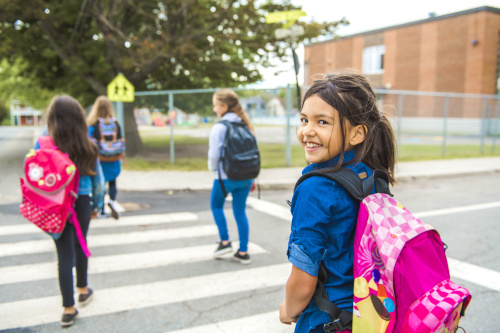With the academic year underway, K-12 schools have resumed in-person learning. However, there is growing concern amongst parents, students, teachers, and faculty that reopenings come with a variety of safety and health risks. Threats of public violence, mental health concerns, uncertainty around the Delta variant, and more all stand in the way of educators having a successful school year.
A recent survey found that 57 percent of respondents are “extremely or very concerned” that a post-pandemic crisis could affect their safety or the safety of a loved one in a school environment. When combined with the knowledge that students are under significant mental health stress and that many younger learners are still unvaccinated, administrators should think carefully about how best to ensure a safe return to classrooms.
The key lies in putting tools, strategies, and policies in place today that ease concerns and minimize risk. By taking the proper steps, schools can focus on creating healthy learning environments for students rather than worrying about the safety challenges at hand.
Provide resources to support student mental health
Going into the 2021-2022 academic year, school administrators must acknowledge the elevated risk of mental health crises and violence on school grounds, especially after such an extended period of disruption. In fact, a Reuters survey found that nearly three-fourths of school districts surveyed witnessed “multiple indicators of increased mental health stresses among students” since the pandemic began. Many students have experienced significant isolation and even trauma over the last 18 months, and a full-time return to classroom learning may exacerbate mental health struggles.
Consequently, schools must prioritize mental health and provide ample resources, outlets, and opportunities for students to receive professional care. This may mean bringing more mental health professionals on staff who are accessible to students at all times. It could also mean setting up anonymous tip lines so that students can privately report if they or one of their peers are experiencing mental distress. Having a self-reporting channel helps address minor situations before they escalate into bigger problems.
On top of implementing new channels and outlets to support student mental health, administrators must also de-stigmatize mental health care in their schools. It’s crucial for leaders to encourage students to take advantage of the resources available to them and reiterate the benefits of doing so.
Prioritize communications about safety
In addition to bolstering mental health support, schools must also adopt a communication strategy to keep students, families, and staff informed. A well-designed strategy accounts for both ongoing, regular communication and real-time updates in the event of an emergency.
To ensure that outbound communications reach intended audiences, administrators should take a multi-modal approach and assign varying degrees of urgency to different communication channels. For example, schools can reserve recorded voicemails and text messages for urgent emergencies and critical communications, such as a lockdown, while emails could deliver helpful yet non-urgent information, such as vaccine requirements or social distancing mandates. Administrators can also segment audiences into different groups (i.e., teachers by grade, staff by building, etc.) to send more targeted messaging on a need-to-know basis.
Before going into the new school year, administrators should also take the opportunity to check that communications protocols are updated and that safety handbooks, emergency planning documents, and other crucial resources exist in digital form, so that teachers and staff can easily refer to them if needed. While pre-planning for events is critical, paper-based plans often don’t get used, which is why many schools now manage events large and small through a digital task list or incident management solution.
Use technology to create a school safety ecosystem
Outside of upgrading communication processes, schools should adopt technology solutions that facilitate collaboration between people on campus, local law enforcement, and other response teams. To do this successfully, administrators must create integrated safety ecosystems through which numerous organizations and departments can engage, share updates, and access the same information.
Deploying mobile panic buttons is one way administrators can achieve this type of ecosystem. Mobile panic buttons provide faculty and staff the ability to alert emergency responders from anywhere, while advanced solutions provide users the ability to share additional context that could be helpful in addressing an emergency, reporting their location and status, and having 2-way communications with authorities. For example, if a health emergency were to take place at a sports game, a coach could press a mobile panic button, indicate the medical nature of the emergency, and request assistance simultaneously from the school nurse, EMS, and 9-1-1. As a result of this rapid, streamlined communication, the student in need of medical care would receive attention sooner.
The more that teachers and administrators can stay connected to EMS, fire, and police, the more likely emergency responses will be swift and effective, delivering better results and even saving lives. Campus safety technology offers an easy path for schools to address major health and safety concerns as students return this fall and bounce back after a tough season in education.
- Motivating students using the Self-Determination Theory - April 17, 2024
- Michigan Virtual’s statewide workgroup releasing AI guidance for K-12 educators - April 17, 2024
- 5 obstacles AI can help schools overcome - April 16, 2024

